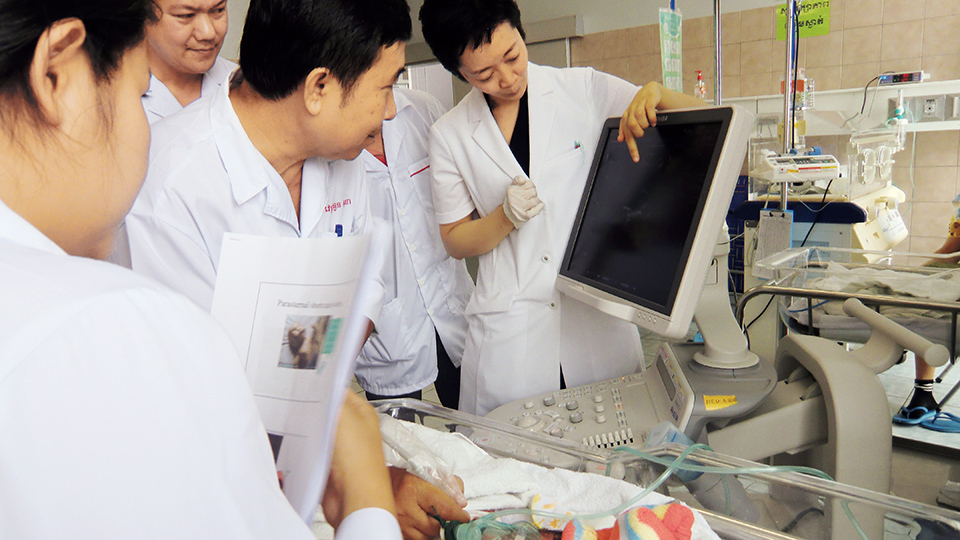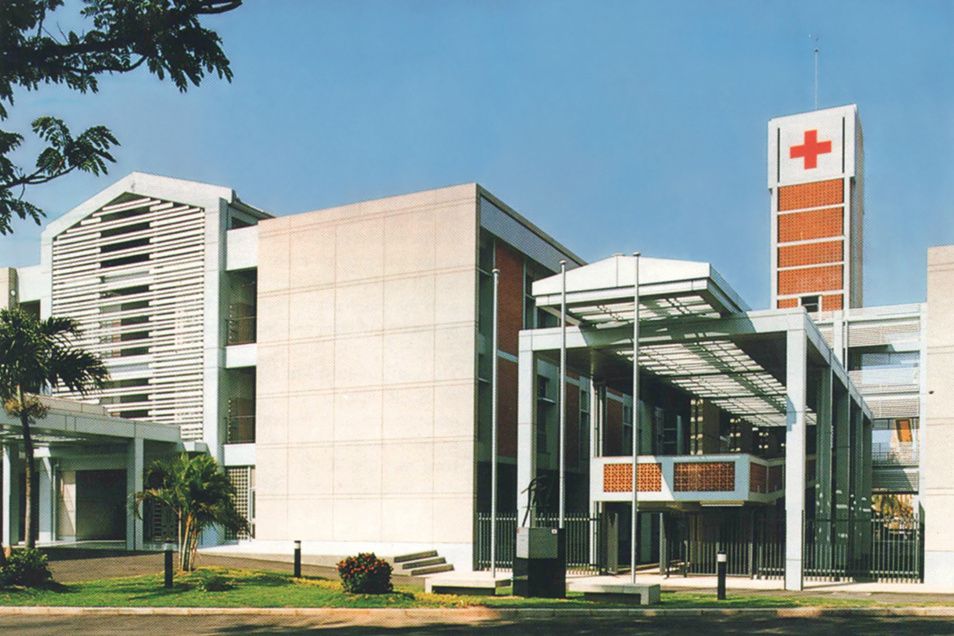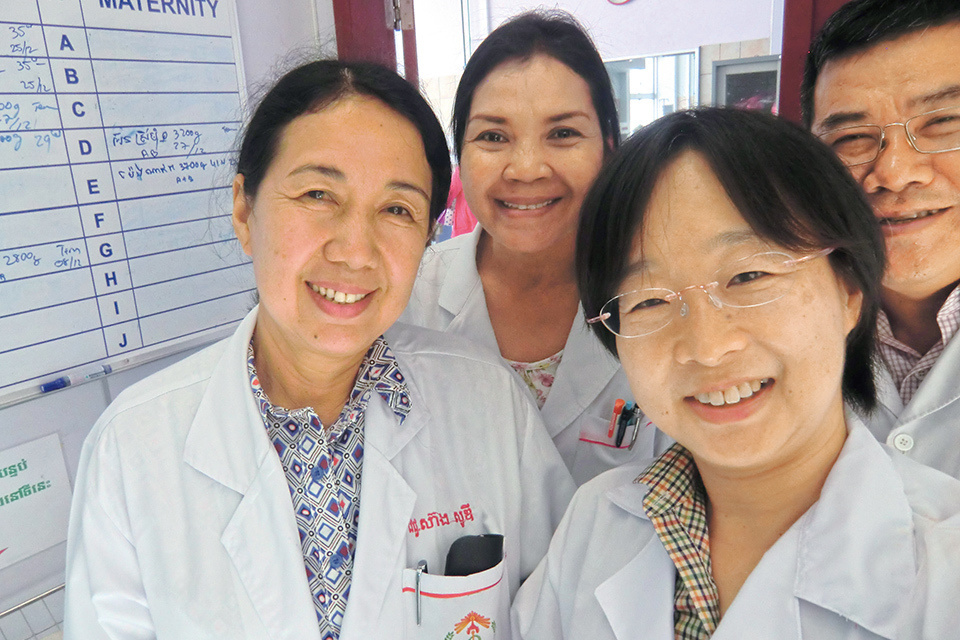For over two decades since the end of Cambodian civil war, Japan has been providing support to the country in an effort to improve healthcare for both mothers and newborn infants.

A mother with her baby after giving birth at the NMCHC. About 7,500 babies are born each year at this health center.
With one of the lowest maternal and neonatal mortality rates in the world, Japan was quick to reach out to Cambodia, a country that has been rebuilding its maternal and child health system ever since its collapse during the civil war. Japan sent a medical adviser to Cambodia’s Ministry of Health in 1992, one year after the war ended. And in 1997, it provided grant aid for the construction of the National Maternal and Child Health Center (NMCHC) in the capital city of Phnom Penh. The NMCHC currently has a clinical function with about 150 beds in its obstetrics and gynecology and neonatal departments, along with an administrative function that manages maternal and child health, as well as a teaching function that provides necessary training for midwives, doctors, and students from all over the country. With all these functions combined, the NMCHC plays a central role in maternal and child healthcare in Cambodia today.

Doctors learn how to use ultrasound to check the baby’s heart in the Neonatal Care Unit at the NMCHC. Midwives, doctors, and students from across the country have been trained there.
Japan’s support, however, is not limited to just the construction of the NMCHC. It started running a technical cooperation project in 1995, before the facility was built, to improve hospital management, clinical services, and training in Cambodia, with the aim of developing systems and human resources for the NMCHC. Since then, Japan has been continuing to provide such support, while understanding the needs of the local people. This support has contributed to a drop in the maternal mortality ratio in Cambodia, which was 1,020 per 100,000 live births in 1990, falling to 437 in 2000, and to 170 in 2014. It thereby achieved, ahead of time, the goal of reducing maternal deaths to 250 per 100,000 live births by the year 2015, as set out by the United Nations Millennium Development Goals. Currently, over 80% of expectant mothers in the country give birth with skilled birth attendants such as trained midwives, and awareness regarding giving birth in health facilities is growing, even in rural areas where many babies have hitherto been delivered at home.
Moreover, a project was launched in Cambodia in 2016 to encourage continuum of care for mothers and their babies. The project provides training about necessary care for newborn infants, such as teaching adequate timing of cord clamping and giving advice on initial breastfeeding just after birth. It also provides training about treatment methods for premature and sick babies, as well as follow-up care for mothers and their children after leaving the health facility. The project’s chief advisor, Dr. IWAMOTO Azusa, talks about the importance of the project. “The problem about giving birth is that we don’t know when a normal birth will become abnormal. That’s why continuum of care before and after birth is needed, not just during labor.”
Dr. Iwamoto describes the relationship between the Cambodian staff members who have been working to improve maternal and child health in response to local needs, and the Japanese staff members who have been helping them with technical support, as “colleagues who have worked hard together.” She continues, “We share the idea of cooperating to improve Cambodian maternal and child health, rather than the idea of supporting or being supported. We are working together on projects so that mothers and their babies can live a better life together.” The strong bond that has been built across borders in hope of a healthy life for mothers and children will no doubt continue to bridge the river for many years to come.

Built in 1997, the NMCHC has been affectionately nicknamed “the Japan Hospital” by locals.

Dr. IWAMOTO Azusa (front row, right) with Cambodian doctors of the Neonatal Care Unit at the NMCHC.






























